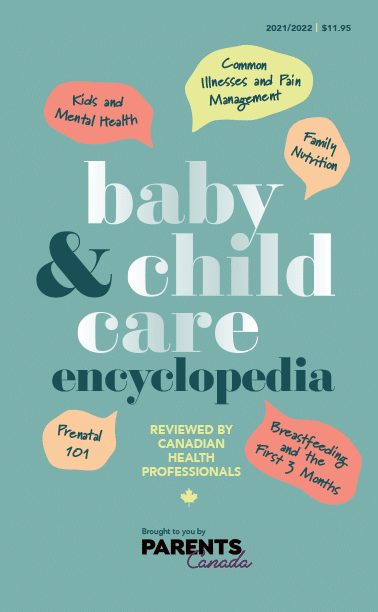Health
5 min Read
Medicine Cabinet Go-tos and Giving Medication

November 3, 2021
Health
5 min Read

November 3, 2021

To ensure you’re prepared for whatever ailments come your family’s way, keep these medications on hand (and make sure you have the proper tools for measuring and administering meds, too!).
Do not use anti-nausea medication for the vomiting of gastroenteritis unless your doctor says so. It makes some children drowsy and then it is more difficult to tell how sick the child is. As well, the child may become too sleepy to drink. Any medication can be dangerous to a child if taken in excess. Keep medications in childproof containers and store them in a safe area, locked up or out of reach.
Liquid Medications Most children prefer liquids off a spoon, or from a plastic syringe you can usually get from the pharmacist for free. Taste the medication yourself, first. Many medications, like penicillin, have an unpleasant aftertaste. Have something tasty on hand that the child likes and can pop in their mouth immediately afterwards. You can mix the medication with a drink, like chocolate milk or lemonade, but don’t use much liquid in case the child doesn’t drink all.
Medications in Pill Form The easiest way to swallow a pill is to put it behind the bottom front teeth and then drink something quickly. The pill usually gets washed down with the first one or two swallows.
Ear Drops If the drops are oily, stand the bottle in warm water for a few minutes. This will make the drops flow more easily. Lie your child on his or her side with the infected ear up. Put the correct dosage in the dropper. Pull the ear lobe toward the back of the head until you can see directly into the ear canal. Put the end of the dropper in the opening and squeeze the bulb. Keep your child on their side for five minutes. A plug of cotton in the outer ear (not shoved into the ear canal) will stop excess drips from trickling down the cheek.
Eye Drops Let a drop of the medication hang down from the dropper, have the child look toward one side, and place the drop on the white of the eye in the outside corner. It will flow in easily. Alternatively, you can have your child close their eyes, then put the drops in the inside corner of the eye. When the eyes are opened, the drops will flow in painlessly.
Eye Ointments Squeeze out a strip of the ointment about one centimetre long and let it hang down from the tube. Then pull the lower lid down and lay the strand of ointment along the inside (the red part of the lower lid). Have your child open and close the eye a few times to spread the medication.
Nose Drops Have the child lie down with his or her head back. Measure the right amount of nasal solution in the dropper. Place the dropper inside the nostril and gently squeeze the bulb. Try not to touch the lining of the nose or the child may jump or sneeze. Have him or her sniff hard a couple of times before sitting up again.
FOR INFANTS: Administer eye or nose drops when they are busy sucking or feeding.
Ibuprofen and acetaminophen are good options for treating fevers. Talk to your doctor about which medication to give your child. Aspirin is no longer advisable for children’s viral illnesses because of the risk of Reye’s Syndrome.
Dosage
A general dosage outline for acetaminophen is provided by the manufacturer. Paediatricians prescribe a dose of 15 milligrams of the drug for each kilogram the child weighs.
Wait for one hour for the full effect. Do not repeat the dose for at least four hours. Repeat only if the indications for treating the fever have returned. If the fever persists for more than 72 hours, check with your doctor.
